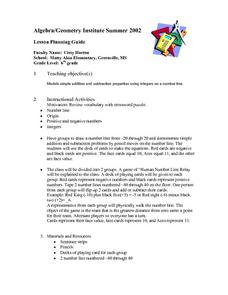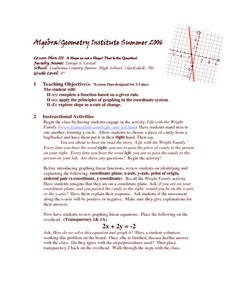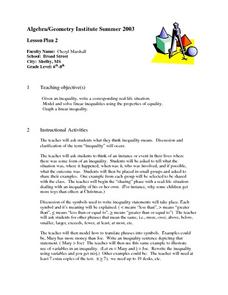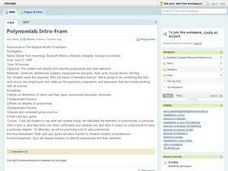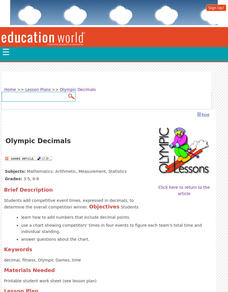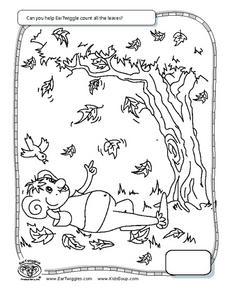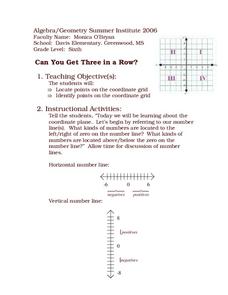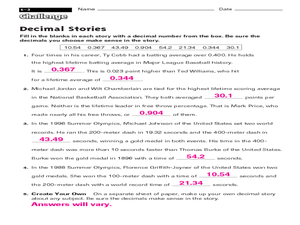University of California
Seasons Lab Book
Unlock the mystery behind seasonal change with a collection of worksheets and activities. Whether they are drawing pictures of Earth's orbit around the sun or graphing the temperature and daylight hours of different locations...
Curated OER
Small Business
Students simulate owning and running a small business by playing Lemonade Stands. They play the game for three weeks, then work with a partner to produce a Power Point presentation which would be given to a Board of Directors showing...
Curated OER
Math Maven's Mysteries
In this logic learning exercise, students read a short story about a hidden baseball bat in a large stadium. Students read the clues about the location of the bat. Students determine where in the stadium seats the bat is located.
Curated OER
Rules of Divisibillity
Sixth graders participate in a instructional activity that covers the Rules of Divisibility. They play a game for a warm-up before the direct instruction. Following the rules being covered they finish the instructional activity using an...
Curated OER
Addition & Subtraction Properties With Integers
Sixth graders use a number line to solve addition and subtraction problems. In groups, they play a game of "Human Number Line Relay." They use a deck of cards to randomly create addition and subtraction equations and physically walk a...
Curated OER
A slope or not a slope? That is the question.
Eighth graders investigate concepts related to Cartesian Coordinates. They use a creative game at the beginning of the lesson to identify quadrants by passing candy to one another. The rest of the lesson is using vocabulary and problem...
Curated OER
Pondering Polygons
Seventh graders use block letter writing to help classify polygons. They use their own names which helps to keep them engaged during the lesson. Finally, 7th graders play a classification game naming different polygons.
Curated OER
Understanding Place Value
Fifth graders study place value. After forming teams, they play a game called, "Who Can Line Up the Number." Students observe numbers in expanded form and place representative digits in the correct order.
Curated OER
Order of Operations
Seventh graders explore the order of operations. They compare how the values of equations change when the order of operations is not followed. They discuss the order of operations. Independently, 7th graders solve equations. Students...
Curated OER
Graphing on a Coordinate Plane
Eighth graders explore the coordinate system. They identify the x and y-axis, parts of the coordinate plane, and discuss the process of plotting points. To emphasize the process of plotting points, 8th graders play an ordered pair...
Curated OER
Lesson Plan 2: Linear Inequalities
Students investigate linear inequalities and the associated symbols. After a teacher demonstration, they translate given phrases into symbols. Students solve and graph solutions to linear inequalities. Using newspapers, they locate...
Curated OER
Polynomials in The Magical World of Numbers
Students identify and describe polynomials and their elements, discuss simple parts that make up equations, inequalities, and exponents, take notes on definitions of terms and their types, including monomials, binomials, and trinomials,...
Curated OER
Olympic Medal Count
In this Olympic medals worksheet, students identify the country's flag and write the country name in the box next to it. Students add the country's abbreviation and watch the Olympic Games. Students put a mark in the appropriate box when...
Curated OER
Order Numbers On a Number Line
Fifth and sixth graders study the use of a number line to add integers and they observe a teacher demonstration of how to add integers on a number line. Afterward, they construct a number line and use the number line to solve addition...
Curated OER
Olympic Decimals
Add competitive event times, expressed in decimals, to determine the winners! Individuals use a chart showing competitors' times in four events to figure each team's total time and individual standing.
Curated OER
EarTwiggle
In this counting leaves worksheet, students assist EarTwiggle in counting all the leaves found within a piece of art and then place their answer in the box provided at the lower right hand corner.
Curated OER
Exploration of "Pillbugs"
Fifth graders define vocabulary terms, identify the characteristics of a pillbug, and create a dichotomous key. Then they examine the pillbugs and make observations and record these observations. Finally, 5th graders observe specific...
Curated OER
Calico Watercolor Cats
A fun art project, this lesson incorporates math and listening skills as young artists play with a new painting technique. First the teacher models how to draw a cat using shapes, an oval for the body, triangles for the ears and so on,...
Curated OER
Statistics
In this statistics worksheet, 9th graders solve and complete 10 various types of problems that include using different types of graphs to illustrate data. First, they determine the median score for each stem-and-leaf plot. Then, students...
Curated OER
Three In a Row
Sixth graders examine how to locate coordinate points. In this coordinate graphing lesson, 6th graders locate the x and y axis. Students use their arms to show horizontal and vertical lines, participate in group and...
Curated OER
Not So Snappy 14
In this math worksheet, students read the word problems that are supposed to reinforce problems solving strategy skills. The skill of number sense is emphasized.
Curated OER
Sailboat Connect-the-Dots Activity
In this math worksheet, students practice counting from 1 to 40 as they connect the dots to make a picture of a sailboat on the ocean. Students color the picture.
Curated OER
Prime and Composite Numbers
Sixth graders investigate the concept of prime and composite numbers. They use a review of multiplication to help explain factoring. Students are taught the definition of a prime and composite number and then practice independently.
Curated OER
Decimal Stories
In this decimal worksheet, students fill in decimal numbers in a story, choosing from a "decimal box" at the top of the page, filling in blanks so that the story makes sense.






